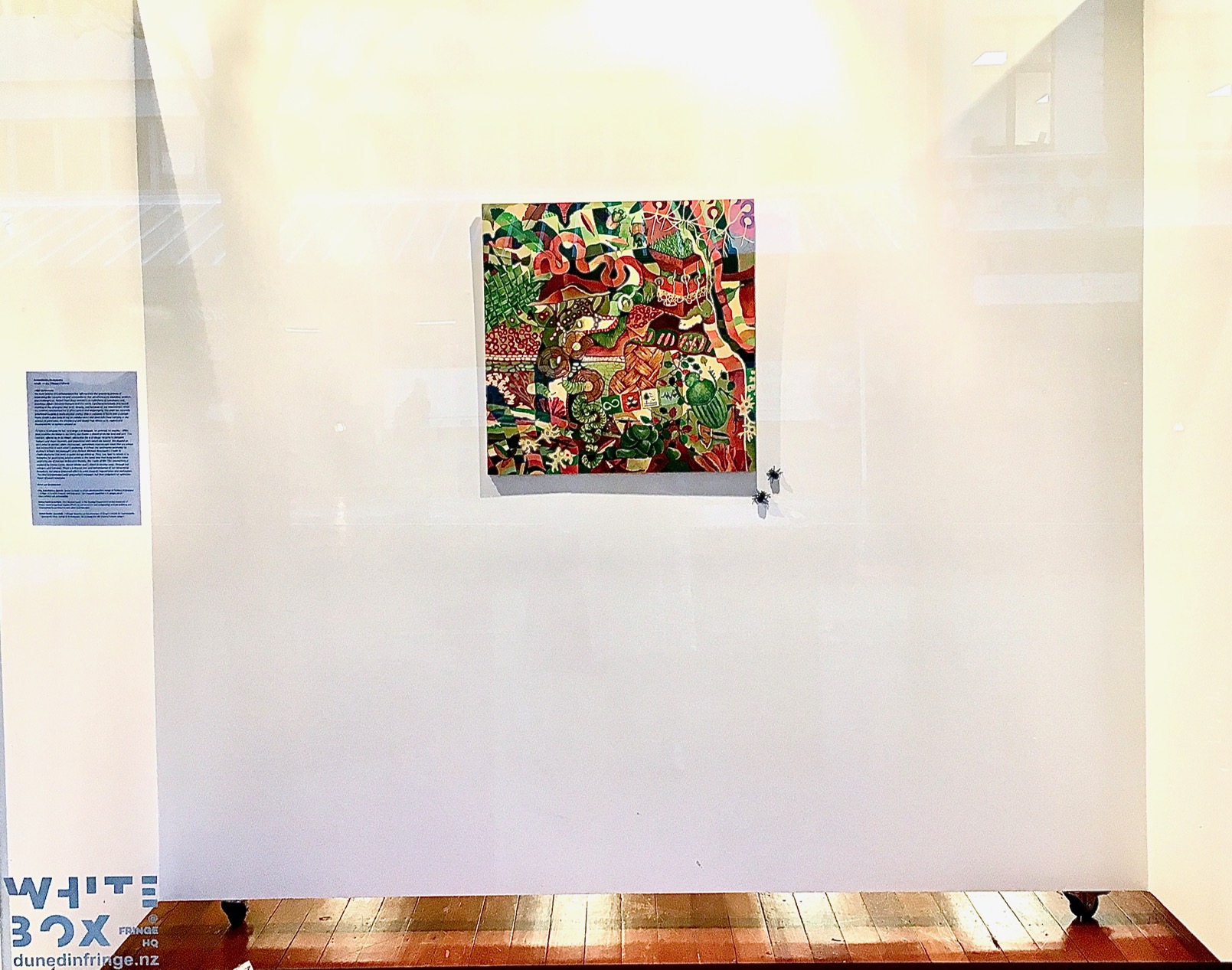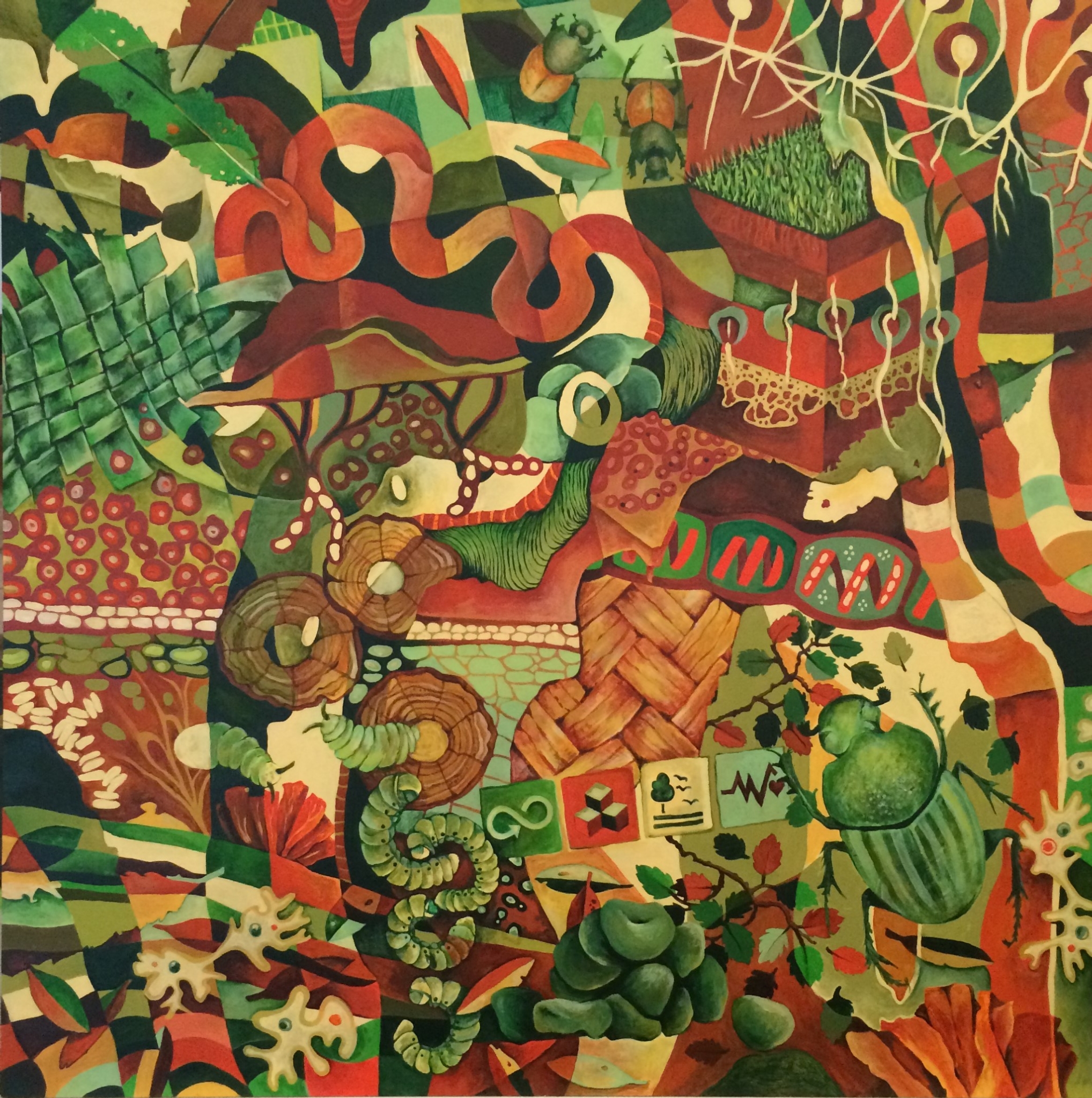Art and Earth Exhibition Meg Brasell-Jones
30 June - 19 July
Art and Earth Exhibition
Meg Brasell-Jones with Emma Curtin, Henrik Moller: Connectivity/Reciprocity


Connectivity/Reciprocity
Acrylic on ply 700mm x700mm
Dung beetles connect history, myth, science, and economy. They symbolise regeneration and restoration of life. They keep vital ecological cycles churning, build soil, disperse nutrients, and play a role in protecting our streams. They improve soils to help feed people.
Artist statement:
The mahi behind this collaboration has afforded me the gratifying process of celebrating the complex natural environment that simultaneously nourishes, protects, and challenges us. Rather than draw attention to a plethora of tumultuous and disastrous affairs between humans and the earth, I uncharacteristically find myself revelling in the synergies that exist, despite, and because of, our intervention. While my creative communication is often cynical and disparaging, this work has naturally gravitated towards a more positive energy that is welcome in hectic and uncertain times. Credit is due here to my co-collaborators and their infectious curiosity in the science (in particular, the intricacy of soil biota) that allows us to explore and experience the ecosphere around us.
Te toto o te tangata he kai, te oranga o te tangata, he whenua, he oneone - While food provides the blood in our veins, our health is drawn from the land and soils. This concept, offered by te ao Maori, advocates for a strategic reciprocity between humans and those elements and organisms with which we coexist. We depend on each other in myriad, often microscopic, sometimes macroscopic ways that are woven and entrenched in each other’s wellbeing. It echoes the sentiments promoted by architect William McDonough’s and chemist Michael Braungart’s Cradle to Cradle discourse that aims to guide design thinking. They, too, look to nature as a metaphor for generating positive waste in the same way that dung beetles make surprising use of manure to become literally, the cradle of life. This connectivity is explored by Emma Curtin, Henrik Moller and I, albeit in varying ways, through our energies and interests. There is a shared love and kaitiakitanga of our astounding biosphere, but also a concerted effort to work towards regeneration and restoration. This first acknowledges past and present missteps, but then embraces an optimistic vision of future synergies.
Artist and Scientist Bios:
Meg Brasell-Jones (artist) - Senior Lecturer in visual communication design at Te Maru Pūmanawa | College of Creative Practice and Enterprise. Her research expertise is in design, social responsibility and sustainability.
Emma Curtin (scientist) - PhD student based in the Zoology Department at the University of Otago, researching dung beetles effects on soil structure and composition and soil leaching and relationships to earthworms and other invertebrates.
Henrik Moller (scientist)- Professor Emeritus at the University of Otago’s Centre for Sustainability – Agriculture, Food, Energy & Environment. He co-leads the Hill Country Futures project.
White Box
About Us
Dunedin Fringe envisions a city ignited by creativity, where all people embrace art, culture and creativity into their daily lives.
We have a mission to provide platforms for creative expression that help nurture communities. We have a special focus on supporting emerging artists, and the development of new and experimental work.
We produce the Dunedin Fringe Festival, Amped Music Project and New Zealand Young Writers Festival annually, curate the White Box Gallery, and manage the performing arts venue Te Whare o Rukutia.
Useful Links
Our Contacts
Dunedin Fringe Arts Trust
19 George Street,
Dunedin 9016,
Aotearoa New Zealand
03 477 3350


